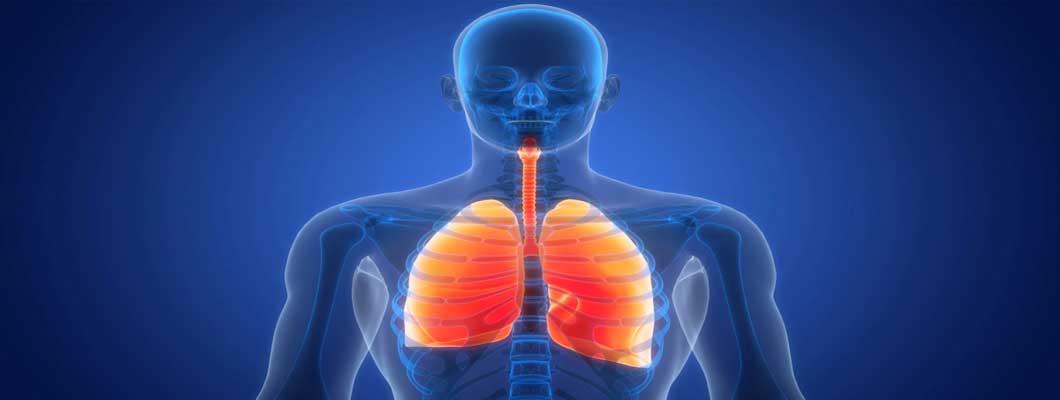
The lungs are the body’s vital organs for gas exchange with the outside world. Constantly exposed to air pollution, cigarette smoke, and harmful pathogens, they are highly vulnerable to damage. In recent years, the incidence of lung diseases such as chronic obstructive pulmonary disease (COPD), pulmonary fibrosis, and lung cancer has been rising steadily, posing a serious threat to human health.
1. Major Threats to Lung Health
Oxidative Stress and Inflammatory Response: Smoking, harmful particles in smog (such as PM2.5), and viral infections stimulate the lungs to produce excessive reactive oxygen species (ROS), triggering oxidative stress. Excessive ROS damage lung cell DNA, proteins, and membranes while activating inflammatory signaling pathways, leading to continuous release of pro-inflammatory factors (such as TNF-α, IL-6). This chronic inflammation accelerates lung tissue damage.
Cellular Senescence and Apoptosis: With aging or long-term exposure to harmful substances, lung cells (such as alveolar epithelial cells and fibroblasts) undergo senescence or apoptosis. Senescent cells lose function, while apoptosis disrupts lung tissue structure, impairs gas exchange efficiency, and increases the risk of lung diseases.
Pulmonary Fibrosis and Structural Remodeling: Chronic inflammation or injury induces abnormal proliferation of lung fibroblasts and excessive secretion of extracellular matrix (like collagen), leading to pulmonary fibrosis and reduced elasticity, eventually causing irreversible respiratory dysfunction.
Pathogen Infections: Bacteria (such as Streptococcus pneumoniae), viruses (such as influenza and SARS-CoV-2) invade the lungs, causing infectious diseases. Pathogens not only directly damage lung cells but also trigger immune responses, further worsening lung inflammation and tissue injury.
2. Potential Mechanisms of NMN in Protecting Lung Health
Antioxidant and Anti-Inflammatory Effects: NMN boosts NAD⁺ levels, which activate deacetylases like the Sirtuin family and suppress inflammatory pathways such as NF-κB. This reduces the expression of pro-inflammatory factors (like TNF-α, IL-6) and alleviates lung inflammation. Higher NAD⁺ also enhances antioxidant enzymes (such as superoxide dismutase, SOD, and glutathione peroxidase, GPx), helping clear excess ROS in the lungs and minimizing oxidative stress damage to lung cells.
Promoting Lung Cell Repair and Regeneration: NMN supports NAD⁺-dependent energy metabolism (including the TCA cycle and oxidative phosphorylation), providing sufficient energy for lung epithelial and fibroblast cell repair and regeneration, thus maintaining lung tissue integrity. NAD⁺ also activates DNA repair pathways (like PARP1), which repair genetic damage in lung cells, reduce mutation risks, and lower the chances of abnormal cell growth or cancer.
Inhibiting Pulmonary Fibrosis Progression: NMN regulates the NAD⁺-Sirtuin signaling axis to prevent fibroblasts from converting into myofibroblasts and reduce excessive extracellular matrix deposition (like collagen), slowing pulmonary fibrosis. NMN also activates autophagy to remove damaged organelles and protein aggregates, easing cellular stress and preserving lung cell function.
Enhancing Pulmonary Immune Defense: NMN improves NAD⁺-dependent immune cell metabolism and function (e.g., macrophages, T cells), boosting their ability to recognize, engulf, and eliminate pathogens, reducing lung infection risks. NMN also balances the lung immune microenvironment by increasing anti-inflammatory factors (like IL-10), preventing immune overreaction and tissue damage.
3. Scientific Evidence: Studies Support NMN’s Lung-Protective Effects
November 2022 study: NMN alleviates acute lung injury
In November 2022, researchers published an animal study demonstrating NMN’s protective role in acute lung injury. Male mice aged 8–10 weeks were injected with lipopolysaccharide (LPS) to induce lung injury, while one group also received intraperitoneal NMN. Results showed NMN significantly reduced lung tissue damage and cell apoptosis, exhibiting anti-inflammatory, antioxidant, and anti-apoptotic effects against LPS-induced injury.
2023 Nutrients study: NMN reduces silica-induced lung damage
In 2023, a study published in the journal Nutrients reported that NMN reduced lung injury in a silicosis mouse model caused by inhaled silica. NMN lowered reactive oxygen species (ROS) production, mitigated oxidative stress, and increased glutathione levels, thus protecting lung tissue.
4. Conclusion: Protect Your Lungs with Science-Backed NMN Support
As lung diseases continue to rise worldwide, maintaining healthy lungs has never been more important. Scientific studies have shown that NMN offers multi-faceted protection against oxidative stress, inflammation, fibrosis, and infections—helping to preserve lung function and overall respiratory health. Choosing NMN as part of your wellness strategy may be a promising step toward healthier lungs and a better quality of life.

Leave a Comment